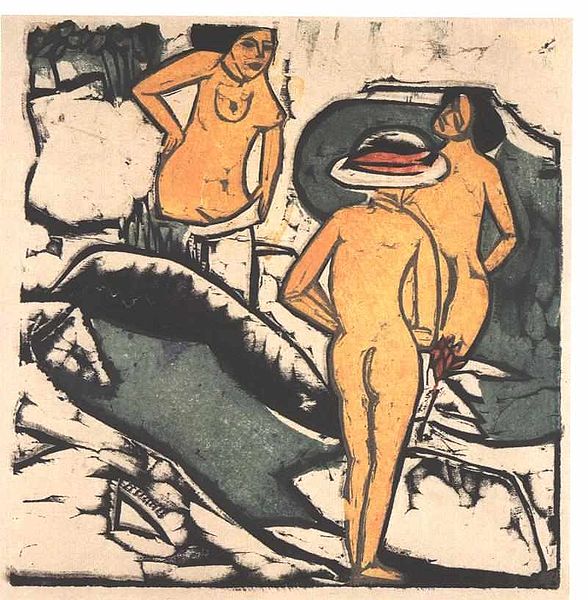Kirchner. The Expressionist Experiment
Bucerius Kunst Forum
29. May 2014 - 7. September 2014
Ernst Ludwig Kirchner (1880–1938) is one of the most avant-garde artists of the 20th century to find his artistic expression in the graphic arts. For this co-founder of the artist group Die Brücke (The Bridge), woodcuts were the most important area of experimentation for the new Expressionist style.
Nudes, bathers, and dance and street scenes in the vibrant metropolis of Berlin before the First World War, and a new way of showing people in portraits were innovative subjects addressed by “Die Brücke”. Their work was characterized by sharp cropping and strong black and white contrasts. In his wood and linocuts, lithographs and etchings, Kirchner experimented with neglected techniques and created a distinctive, expressive body of work. He printed every work himself, each print is unique with a varied color scheme. Only a few copies exist of some prints.
Kirchner's graphic works of art are the most extensive in German Expressionism. The Bucerius Kunst Forum will show an overview from the internationally famous collection at the Brücke Museum in Berlin, which has one of the largest holdings of Kirchner's work.
The scholarly point of departure for this exhibition is the new catalogue listing all of Ernst Ludwig Kirchner's prints.

Ernst Ludwig Kirchner: Badende Frauen zwischen weißen Steinen, 1912, Farbholzschnitt, Brücke-Museum Berlin
Ernst Ludwig Kirchner (1880-1938): Im Café II (Im Café), 1904, Brücke-Museum, Berlin
Mädchenakt auf Sofa – Das Modell 3 (Mädchenakt auf dem Sofa), 1905, Brücke-Museum, Berlin

